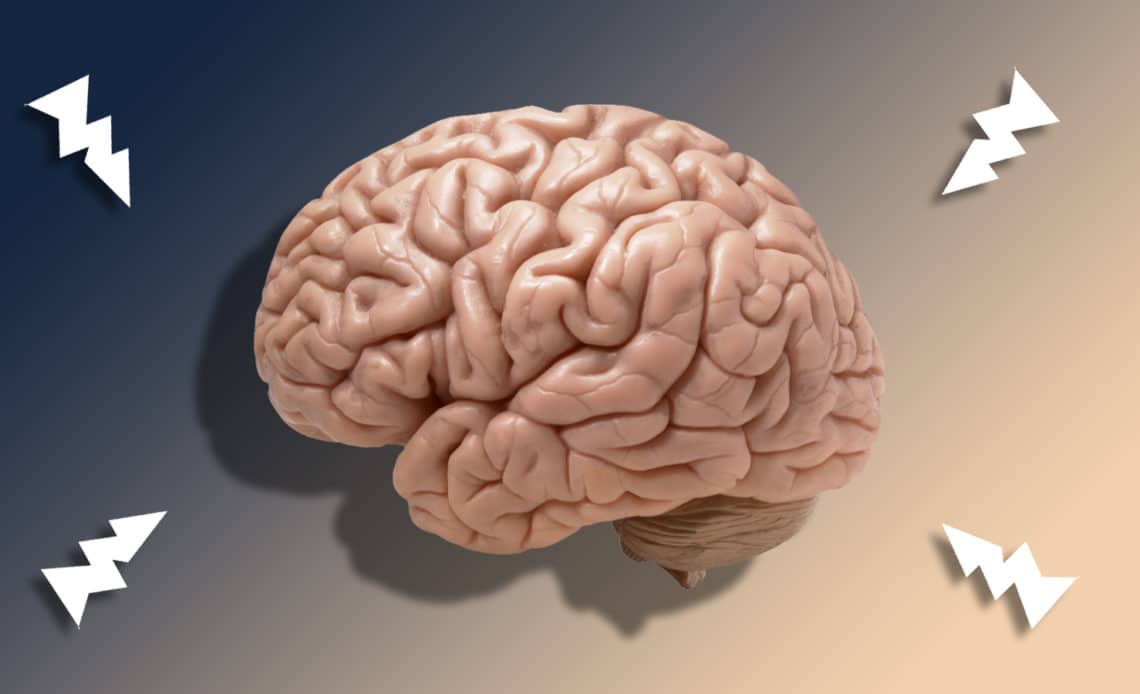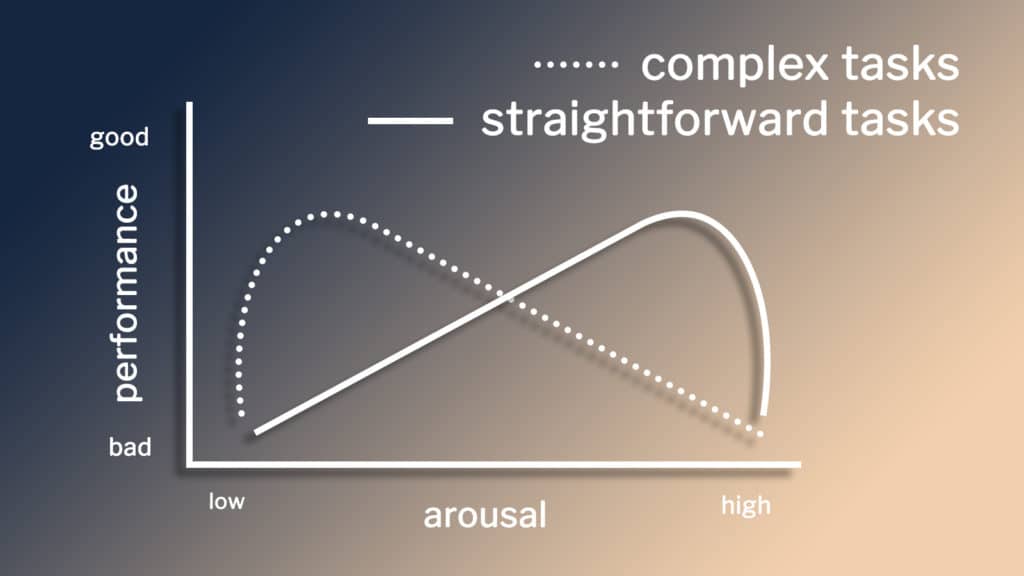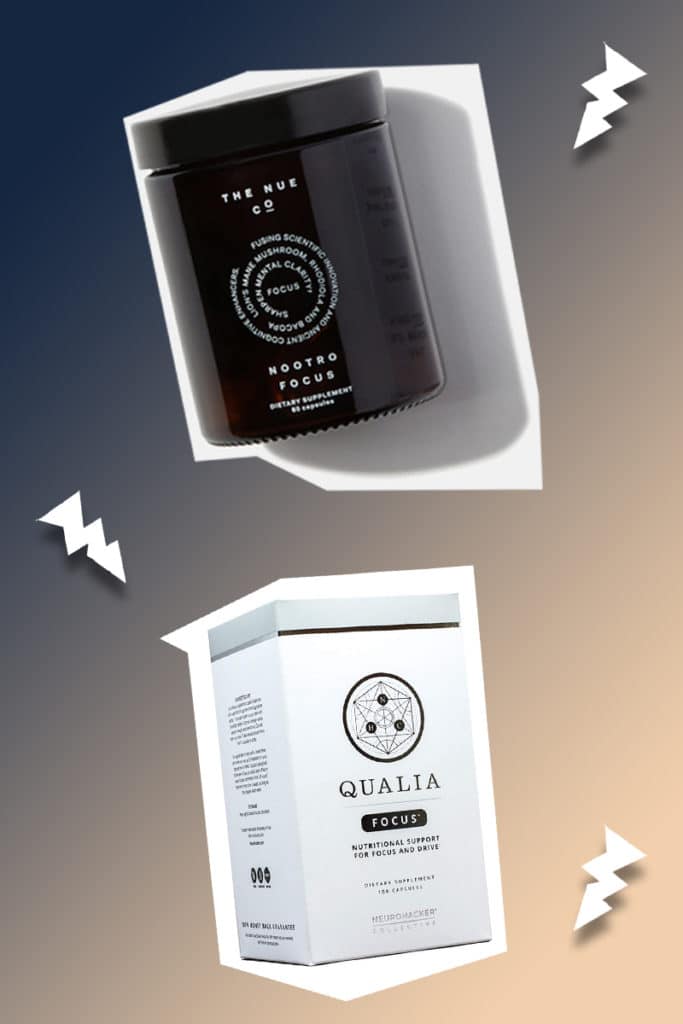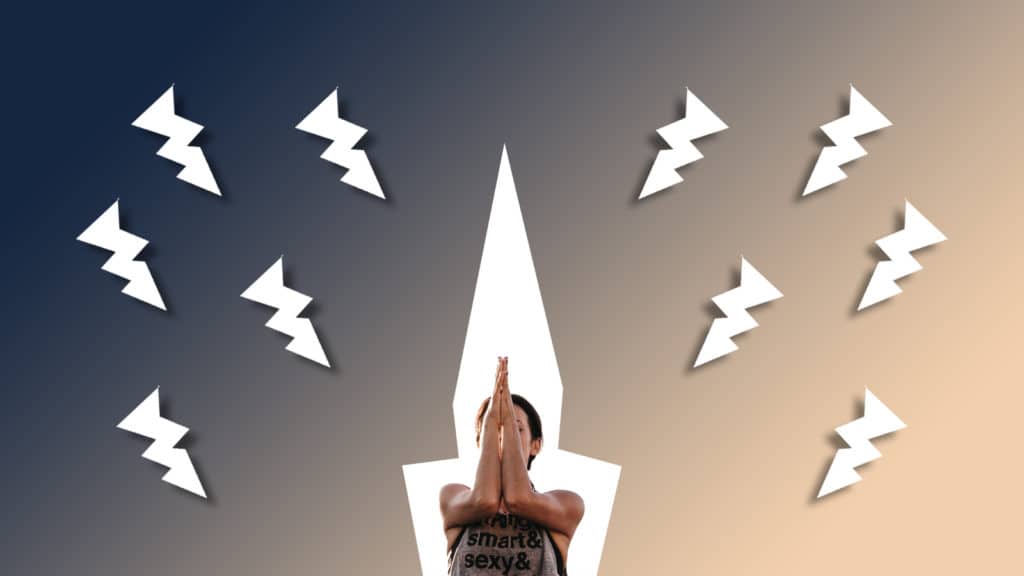
Longread alert! This is an in-depth explainer on nootropics. Have you been hit with Instagram ads by companies like Qualia Mind, Kin Euphorics, Nootro-Focus, and Hunter Focus? These guys are selling nootropics! Now that they’re getting so popular, we published this article to answer the most common questions about nootropics, such as “What are nootropics?”, “Which nootropics should I take?” “What are the best nootropics?” and more. Also, we can’t say this enough: consult your doctor before experimenting with nootropics!
In the movie Limitless, Bradley Cooper becomes superhuman after he begins taking a cutting-edge “smart drug.” In real life, nothing nearly that powerful exists.
But smart drugs do exist. They’re called nootropics, and while none of them are magic pills, many of them can be quite effective for specific purposes, from improving working memory, to providing stimulation while reducing stress, to enhancing motivation.
That said, a lot of people misunderstand nootropics. Here’s what you need to know. But before we dive into discussing specific nootropics for specific purposes, we’ll explain how nootropics work, how the human brain works, and what you can realistically expect from taking nootropics.
How Do Nootropics Work?
Nootropics work via a wide variety of mechanisms. However a plurality of them—if not an outright majority—are either stimulants or deppressants, even if that isn’t their only mechanism of action. One of your primary aims in using nootropics should be to reach the optimal level of psychological arousal for a given purpose.
The Yerkes-Dodson Law describes the relationship between psychological arousal (what most people colloquially refer to as their “energy level”) and performance for a given task.

The optimal level of arousal is different for different tasks. As a rule, it’s higher for simple, straightforward, physical and/or repetitive tasks. It’s lower for more complex, difficult, or purely mental tasks.
Task types, from lowest to highest optimal level of arousal, go something like this:
- Complex mental tasks, like writing this article.
- Simple mental tasks, like filling out a big stack of paperwork.
- Social tasks, or mental tasks with minor physical components, such as making sales calls or walking through a building doing a safety inspection.
- Physical tasks with significant mental aspects, such as playing sports. Also social-physical tasks such as dancing.
- Purely physical tasks, such as running or weightlifting.
A common mistake with nootropics is to find an “optimal dose” and assume that it’s optimal for everything. Now that you know about the Yerkes-Dodson Law, you can see why that isn’t the case.
Also bear in mind that even low doses of caffeine, and most other stimulants, can impair sleep or lead to long-term dependency. So with stimulants it’s best to err on the side of too little rather than too much.

Nootropics Produce Mental States, Not Results
The whole notion of a “nootropic for productivity” or a “nootropic for socializing” is a bit off-base. Nootropics don’t directly make you do anything. Rather, they help put you into a mental state that would be more conducive to doing something.
Bearing the Yerkes-Dodson Law in mind, you can see how different people might need different nootropics to reach the optimal mental state for a certain function. They might be coming at it from opposite directions. A naturally relaxed person, or a tired one, might need a stimulant to become optimally productive. A naturally hyperactive person, or one who has had a lot of caffeine, may instead need to lower their level of arousal.
The whole notion of a “nootropic for productivity” or a “nootropic for socializing” is a bit off-base. Nootropics don’t directly make you do anything. Rather, they help put you into a mental state that would be more conducive to doing something.
Of course, some nootropics also work via means other than raising or lowering your overall level of arousal.
It is therefore vital to think beyond “I want to be more productive.” Instead, consider what mental capacity you want to boost, or what mental state you need to achieve. Do you need a stronger working memory? Do you need to be less distractible? Do you need to be more confident, or more relaxed?
Once you view nootropics as tools to get you into a certain headspace rather than simply tools to make something specific happen, you can formulate a clear idea of what you need them to do for you.
Nootropics Should Be Combined With Other Approaches
This should go without saying, but nootropics should not be seen as a magic pill, or a self-contained solution to your problems. To get the best results, you should combine nootropic use with non-drug approaches, which will have a synergistic effect.
While the focus of this article is on nootropics, it’s worth mentioning a few basic tools that you can combine with nootropics for maximum effect.
- Sleep seven to nine hours a night on a regular schedule to make yourself healthier and better at everything
- Practice a morning routine that gets you off to a running start every morning
- Have an evening routine that helps you unwind before bed, including a “no screens” policy for the last hour before bed
- Follow good productivity habits, such as the pomodoro technique, or working in a distraction-free space
- Use structured note-taking to aid your memory, and keep a calendar
- Take daily walks and get plenty of sunlight
- Stay hydrated
- Eat low-carb, high-protein meals to produce more dopamine when you want more energy, and high-carb meals to produce more serotonin when you want to relax (serotonin is a precursor to melatonin)
- Eat slow-digesting meals (protein, fruits and vegetables, few or no processed carbohydrates) for steady energy levels
- Meditate on a daily basis
Above all, nootropics should have a similar place in your mental performance strategy to the one dietary supplements have in your fitness strategy: they’re a supplement to a good lifestyle and good habits, not something that will bring you results all by themselves.
What Nootropics Should You Take?
Which nootropics actually work? The following are the first seven nootropics we recommend anybody try, regardless of their specific goal.
| Nootropic | Benefits | Dosage |
| Caffeine | More energy | 100 mg once a day |
| L-theanine | Promotes calm | 200 mg once a day |
| Creatine | Neuroprotective, reduces mental fatigue, reduces depression | 5 grams twice a day |
| Ashwagandha | Stress and anxiety reduction, sleep aid | 400 mg once or twice a day |
| Rhodiola Rosea | More energy, reduces stress, reduces fatigue | 300 mg once a day |
| Piracetam | Improves long-term and working memory, slows cognitive decline | 1,200 to 4,800 mg a day, divided into 3 doses |
| Alpha-GPC | Slows cognitive decline and Alzheimer’s symptoms | 400 mg three times a day |
Caffeine Plus L-Theanine
Sometimes referred to as the everyman stack, the combination of caffeine and L-theanine is almost universally recommended as the first thing people try. Why? Because it works for almost everyone, is readily available, is proven to improve mental performance, and has few side effects.
Nootropics should not be seen as a magic pill, or a self-contained solution to your problems.
You know what caffeine is. As for L-theanine, it’s an amino acid that has calming effects. It mitigates the negative side effects of caffeine, so you can get the energy boost, hopefully without the jitters.
The “standard” dosing here is 100 mg of caffeine and 200 mg of L-theanine. Note that while L-theanine is found in tea, particularly green tea, the ratio is nowhere near as high (as in, there’s less L-theanine) as what’s recommended for nootropic use. Of course, the actual ratio will depend, as always, on what task you’re doing—remember the Yerkes-Dodson Law again.
Take regular tolerance breaks from caffeine in order to avoid addiction. Three to seven days a month without caffeine is a good guideline. Remember that L-theanine doesn’t actually neutralize caffeine or help your body eliminate it faster, so it won’t prevent caffeine’s effects on sleep. When in doubt, err on the side of taking less.

Creatine
Another amino acid, creatine is known primarily for being a staple muscle-building supplement used by bodybuilders. However, there is a growing body of research to suggest that creatine has a variety of neuroprotective effects.
Creatine can reduce mental fatigue as well as symptoms of sleep deprivation. Multiple studies have shown small improvements in subjective well-being. It even reduces symptoms of depression, and shows a synergistic effect with SSRIs in doing so.
Creatine is cheap and has no side effects other than some gastrointestinal discomfort if you take too much at once. It is best taken in powder form—five grams in the morning and five grams in the evening. It takes a few weeks to see the benefits; they’re modest, but reliable.
Ashwagandha
Ashwagandha is the most popular and well-supported pure stress reduction nootropic. It is helpful for relaxation, sleep, and supporting social activity by reducing social anxiety.
Studies consistently find moderate stress reduction with it, and it has a good side effect profile. It’s also been reported to be useful for stress-related insomnia. A typical dose is 300 to 500 mg, once or twice a day, with food.
Rhodiola Rosea
Rhodiola rosea is an herbal supplement that appears to act as both a mild stimulant and a mild stress reducer. It has been shown to reduce fatigue. The effects take a half hour to kick in and last four to six hours. In other words, it has similar stimulant properties to caffeine, but doesn’t seem to have cross-tolerance with caffeine.
Rhodiola rosea is a good option if you want a less jittery stimulant, and is particularly good for those suffering from stress-related fatigue. It shouldn’t be taken in the evenings since it can disrupt sleep.
Piracetam
Piracetam is probably the most popular nootropic for improving memory and supporting learning. Studies show that piracetam improves both long-term and working memory, however the effects may be quite minor in healthy individuals. The main clinical finding about piracetam is that it slows cognitive decline.
It is possible, however, that many studies underrate piracetam because it needs to be taken for longer periods than the duration of the studies. The most positive findings generally came from studies lasting six weeks or more.
The mechanism behind piracetam is still unclear, though the leading theory right now is that it increases the permeability of brain cell membranes. Dosing is typically 1,200 to 4,800 mg a day, divided into three doses.
Alpha-GPC
Alpha-GPC is a modified form of the neurotransmitter choline. It has been shown to reduce cognitive decline and Alzheimer’s symptoms in humans. Alpha-GPC also improves memory and learning in rats, though the effect hasn’t been demonstrated in humans yet.
Studies almost always use a dose of 400 mg, three times a day. Anecdotally, many people report benefits at half that dose, but 1,200 mg is the dose scientifically associated with consistent effects.
What’s The Best Way To Take Nootropics?

Nootropics can be amazing, but you have to resist the temptation to dive right into the deep end of the pool by trying everything at once.
That means avoid the more exotic stuff, or prescription drugs, for now. No LSD microdosing, no semax, no noopept or oxiracetam, and no modafinil. That can come later, if you want, but it’s best to stick to safe and well-tested, newbie-friendly supplements when you’re starting out.
It also means try just one thing at a time—or two things, if you’re combining a stimulant and a relaxant, like caffeine and theanine. By systematically running self-experiments, you can figure out exactly which nootropics help you in which scenarios. Over time you can make your experiments more sophisticated, testing “stacks” of two or more nootropics.
Most of all, remember that the effects of nootropics are synergistic with non-drug approaches. By practicing proper productivity habits, building relaxation into your daily routine, and the like, you can both minimize your need for nootropics, and maximize the effects you get when you do use them.
Featured image credit (brain): _DJ_
Editor’s Note About The Research In This Article
This article has been heavily researched and fact checked, using peer-reviewed papers from reputable academic and trade journals. Though each source we used is hyperlinked in-line, if you’d like a list of sources we used for this piece, please email us at hello@the-unwinder.com. Also please reach out if you see any problems, errors, or misinterpretations of the data in this article.
Great content! Super high-quality! Keep it up! 🙂